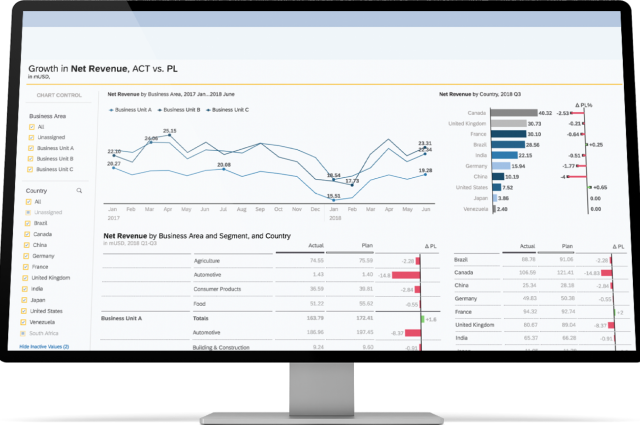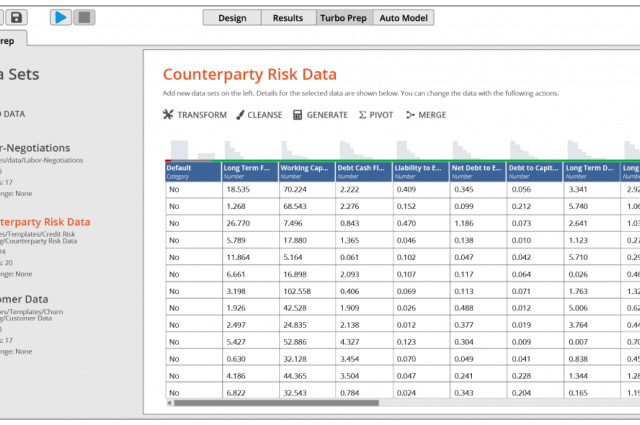Lead generation is a complex game. To ensure you generate as many as possible, you need to make sure you’re investing your time, energy, and money in the right places. This is often more difficult to do than companies expect.
Predictive analytics models can be a solution to this problem. They help salespeople make smarter decisions about allocating their time and suggest the optimal strategies for improving lead generation and conversion.
Understanding Predictive Analytics
At the most basic level, predictive analytics uses historical data to predict future events. It typically involves the use of statistical algorithms and machine learning techniques.
Why use them?
Companies use predictive analytics because they make smarter, more forward-thinking decisions in various areas. For example, your business can leverage productive analytics models to:
- Drive lead generation
- Better understand consumer behavior
- Optimize how you spend your resources and time
- Retain more customers
How Predictive Analytics Models Help With Lead Generation
Predictive analytics models help companies find new leads and market to them more effectively.
A company might create a model that tells them what their ideal lead looks like and where they’re most likely to find people that fit that profile.
Models that help companies assess the efficacy of their marketing practices are also very popular. Businesses can use predictive analytics to determine what they do well throughout the lead generation process – and what can be improved.
The idea is that predictive analytics models provide insights that define the optimal ways for a company to find and interact with leads, which helps them close those leads at a higher rate.
The Top Predictive Analytics Models To Drive Lead Generation
There are three main categories of predictive analytics models worth learning about to drive lead generation. This section will cover each of them and provide examples of how you might use them.
Clustering models
Clustering models are another way of dealing with customer segmentation. The main difference between this type of predictive modeling and other approaches to customer segmentation is that algorithms auto-segment groups of people instead of marketers.
Clustering models are effective because they take the guesswork out of the customer segmentation process. They can also use many more metrics to separate customers into groups than humans can.
It’s not unusual for a clustering model to create segments of customers based on 30 characteristics or even more.
Behavioral clustering involves using algorithms to group customers together based on shared purchasing behaviors. These models might use factors like how often a consumer purchases or how much they spend on an average order.
Product-based clustering analyzes the product groupings that consumers buy from and creates segments based on this. This can be helpful when deciding how to market to a lead.
For example, if a clothing store knows that a customer is only interested in men’s clothing, they can optimize their marketing messaging to that consumer to reflect this.
Brand-based clustering is similar to product-based clustering but focuses on the brands that people like instead. It’s a great way to get a sense of the types of companies that a group of consumers likes to shop for, which can be useful information during the marketing and sales processes.
Propensity models
Propensity models predict a consumer’s future behavior. There are many different types of propensity models because companies are interested in predicting a wide variety of future behaviors in their target audiences. But here are three of the most prominent types of propensity models.
Predicted lifetime value models analyze how much a customer is expected to spend over the lifetime of their account. This information lets you know how much time and money is worth the spend.
Propensity to engage models looks at how likely a customer is to engage with content in the future. This can be helpful when deciding the optimal marketing messages to send.
Propensity to churn models alert you when you’re at risk of losing a customer’s business. These are super helpful for companies trying to reduce their turnover rates because the model tells them when they need to take action to reduce the risk of losing a client.
Collaborative filtering
Collaborative filtering models help companies make smarter product recommendations to existing customers. If you’ve ever seen a “suggested buy” on a website like Amazon, then the company likely used a collaborative filtering predictive analytics model to deliver that recommendation to you.
Up-Sell models use analytics to get a customer to spend more when they’re completing the checkout process. These recommendations are typically tied to specific products and can help a company increase its average per-sale revenue.
Cross-Sell models are essentially the same as up-sells, the only difference being that the buyer’s recommended a complementary product instead of a better one.
Next Sell models differ from the other two collaborative filtering methods in that the recommendations typically take place after a sale is complete.
With this model, a customer is sent marketing material for a recommended follow-up purchase based on their initial buy. It’s a helpful way to keep a consumer in your ecosystem even after you convert them.
Predictive Analytics Tools
Companies with the right personnel can create their own customized predictive analytics modeling tools. However, for many businesses, it isn’t necessary to build one from the ground up.
Instead, there are a wide variety of solid predictive analytics tools available for purchase. These let you perform each type of modeling discussed above (in addition to others) with the data you feed it.
There are many strong contenders on the market, but here are some of the top-tier.

SAP Analytics Cloud
The SAP Analytics Cloud is one of the most prominent predictive analytics modeling services in the world. It uses artificial intelligence to forecast a wide variety of information. Users can leverage the tool to discover new relationships and patterns in their data, which can ultimately help them unlock a more powerful lead generation process.
The SAP Analytics Cloud starts at $22 per user per month.
SAS Advanced Analytics
This product is a suite of analytics tools, which each focuses on a different core task. For example, you can use the SAS Advanced Analytics platform to mine your data, prepare it for modeling, and model it.
The cool thing about this tool is that it’s really fast. You can run a variety of quick simulations to get the information you want without having to wait hours. And you can make tweaks to the dataset you’re looking at without having to rebuild the model from scratch.

RapidMiner
RapidMiner is one of the most popular free predictive analytics tools on the market. Its price tag is the main thing that makes it stand out. But the tool is also super powerful. It has a built-in library of more than 1,500 algorithms. You can apply any of these algorithms to whatever set of data you’re working with.
The tool also has a clean interface that’s simple to operate. And it will tell you useful stats like your future ROI under various models.
The downside to RapidMiner is that it isn’t a complete suite of analytics software like the other products covered on this list. That means you may need to use it in combination with data mining or data preparation software if you want to get the most out of your data.
LeadLander: Get More Out Of Your Lead Generation Process
Embracing predictive analytics is just one way to start getting more out of your lead generation process. Using LeadLander is another.
Our software provides companies with a wealth of information about who’s visiting their website. You can use LeadLander to discover new leads, confirm interest from existing ones, and receive real-time notifications when a prospect checks out what you have to offer.
LeadLander will also help you improve the efficacy of your marketing campaigns and website. It will tell you how leads are getting to your site and what pages they spend the most time on so you can optimize them for maximum performance.
Using LeadLander in combination with predictive analytics modeling can be a powerful way to unlock a better lead generation process.
Give our 14-day free trial a chance to see how much you can benefit from using LeadLander today.
Related Reading


